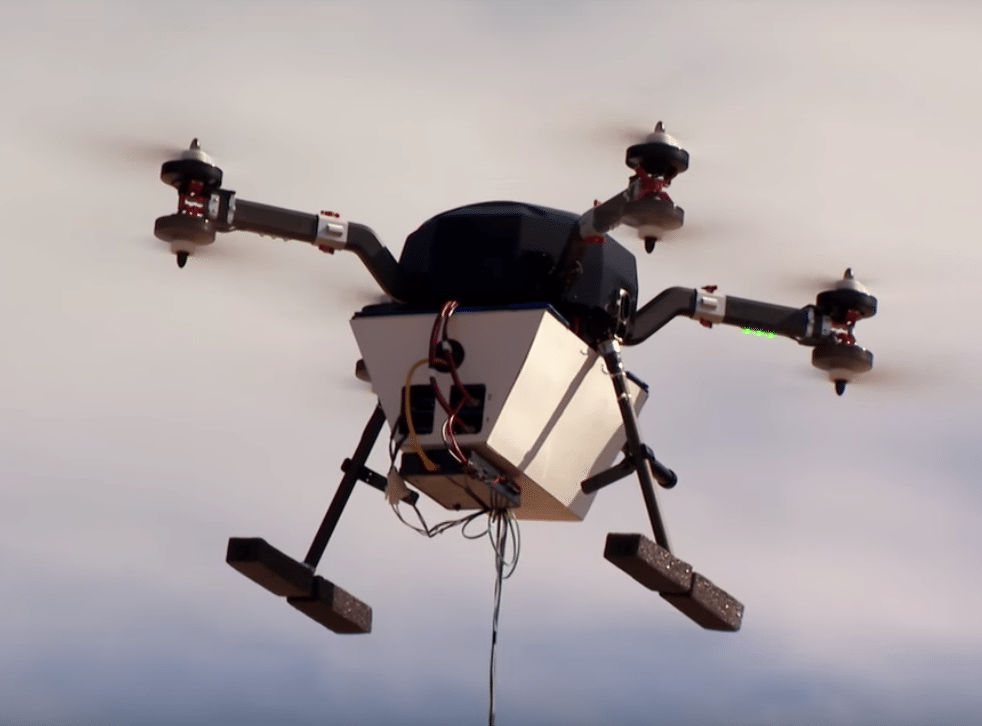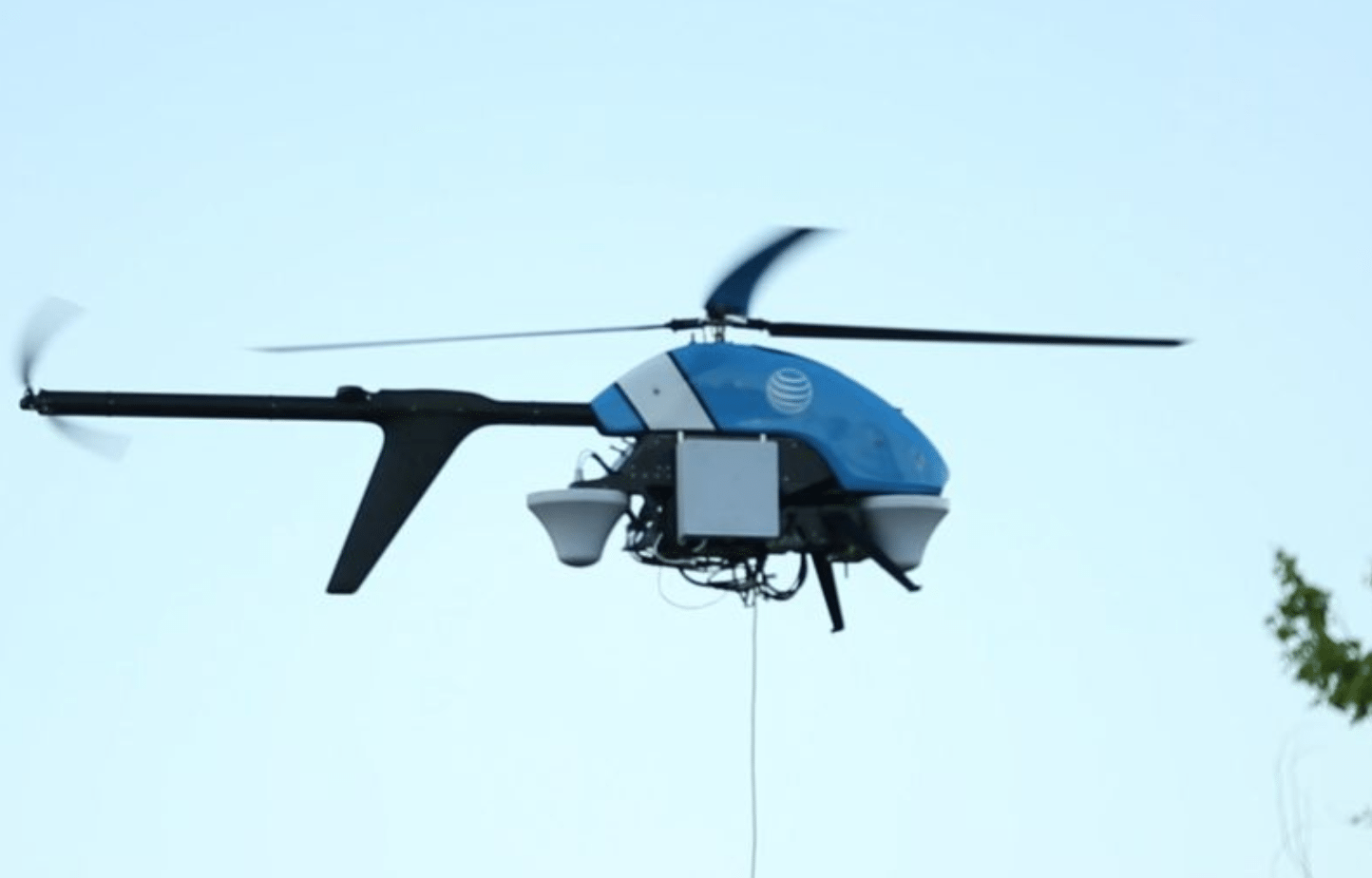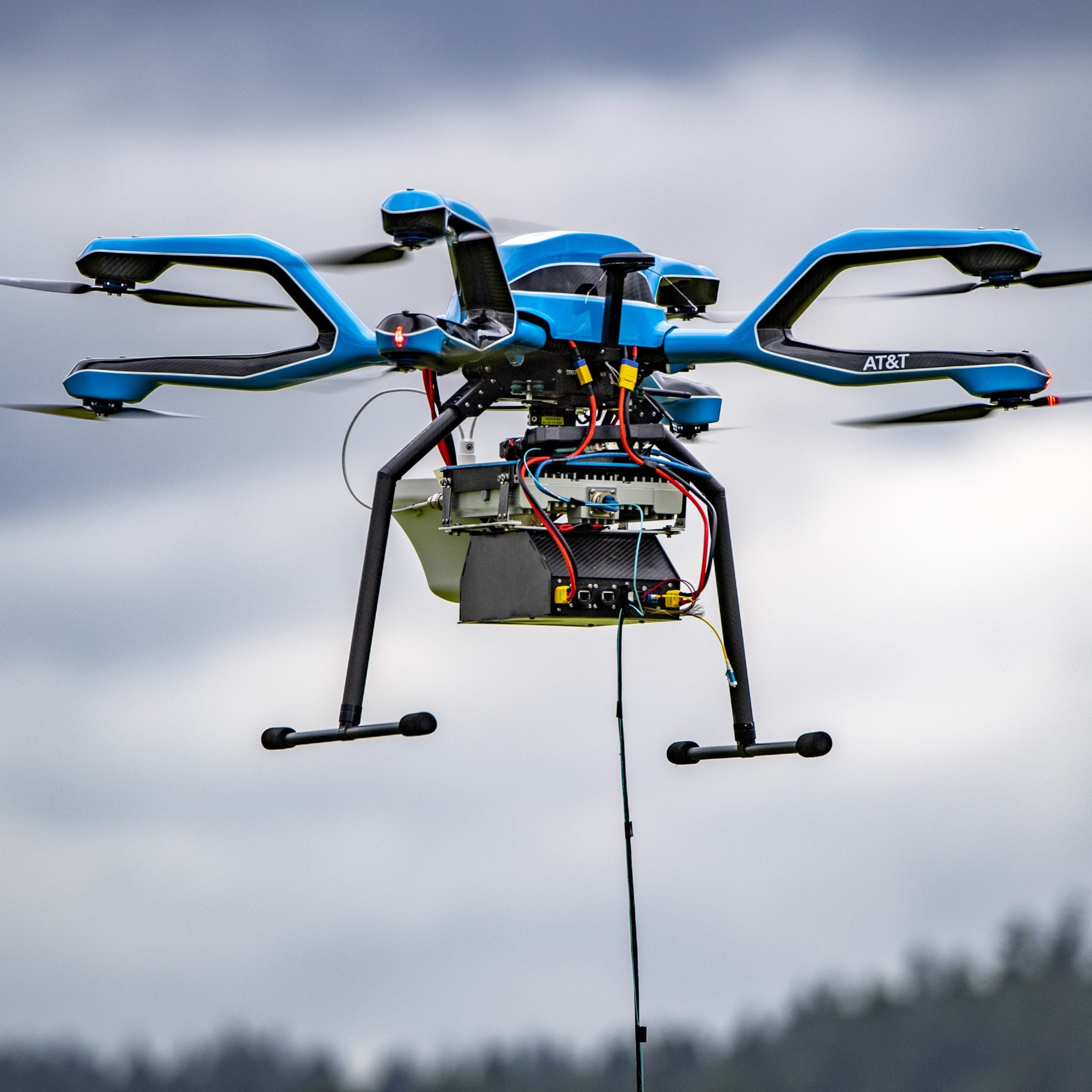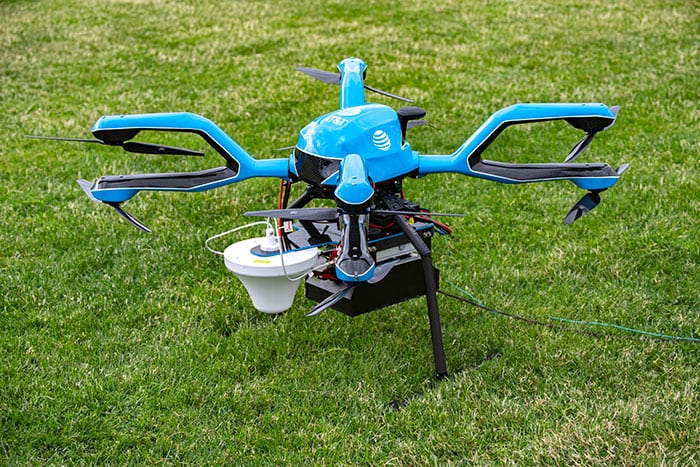Flying COW drones are key FirstNet efforts and network plans of the future.
Flying Cells on Wings are similar to their terrestrial COW cousins — except instead of being mounted on a portable mast, the cell is mounted on a drone. The drones are typically tethered with a cable that provides power and backhaul connectivity. These flying COWS can be used to boost the signal of the network or in emergencies, to replace the network until repairs can be made to infrastructure.
The Flying COW provides wireless connectivity for up to 40-square mile-area, AT&T says in a blog. Their COWs fly 200 feet above the ground and are useful for providing coverage in remote areas.
AT&T has experimented with the flying COW concept for a few years now and used the system in Puerto Rico after Hurricane Maria and in Texas after Hurricane Harvey. Verizon has done similar flying COW deployments to help with disaster recovery.

AT&T’s experimental flying COW (cell on wings). (Image: AT&T)

AT&T’s flying COW deployed in Puerto Rico in late 2017 to reestablish cell service after Hurricane Marie. (Image: AT&T)
Recently AT&T’s Network Disaster Recovery (NDR) Team created the “Extreme-Weather Drone,” which AT&T announced will be one of two types of COWs the company will use as part of its work with the First Responders Network Authority. FIrstNet awarded AT&T a 25-year contract to provide a mobile network for emergency responders. AT&T has opened up access to all of its spectrum to first responders, with priority and preemption services so that first responders can access the network as-needed in a disaster situation.
[Don’t miss special report and webinar “Operators taking flight: The emerging role of drones in network operations and maintenance”]
To design the all-weather drone, AT&T looked at the best drones out there and worked with the manufacturer to modify the drone for all weather conditions.

AT&T’s All Weather Flying COW drone will keep the cell phone network up and running in disasters. (Image courtesy of AT&T)

AT&T’s Extreme-Weather Drone (Courtesy of AT&T)
Further reading:
- AT&T helped with Puerto Rico’s disaster recovery using COWs (Cells on Wings)
- Learn more about AT&T’s efforts in a recent RCR Wireless News webinar “Editorial Report: Meeting the public safety communications imperative”
- AT&T’s new Flying COW drone to be all-weather disaster insurance
The post Flying COW drones make headway appeared first on RCR Wireless News.
